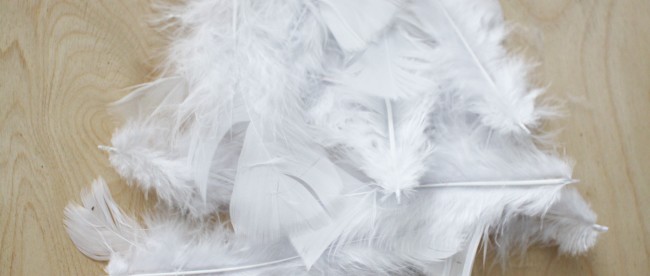Feathers, Lead, and Gold

The age-old riddle is simple: which weighs more, a pound of feathers or a pound of lead? Your instnict may be to go with the lead — in equal amounts, lead, after all, is heavier than feathers. But this is a trick question. A pound is a unit of weight; therefore, a pound of X weighs the same as a pound of Y.
Or does it?
If you put a pound of feathers on one side of a balance and a pound of lead on the other, the scale would rest with both sides even with one another. But what if we were to swap out the lead for gold? What would happen then?
In that case, the balance would end up tilted, showing that the feathers weigh more. But it has nothing to do with the feathers or the gold itself — it has to do with how we measure their weights.
Whenever we use the term “pound” (to discuss mass/weight at least — it means something else when discussing cakes and British currency), we’re talking about pounds as defined by something called avoirdupois system. It’s the standard, non-metric system you’re familiar with if you’re an American. In the avoirdupois system, there are 16 ounces to a pound. Just to get some math out of the way — we’ll use it soon — one avoirdupois ounce is equal to about 28.35 grams. Multiply those sixteen ounces by 28.35 grams and you end up with about 453.6 grams per avoirdupois pound.
Feathers, being not all that special, are measured in avoirdupois pounds — and so is just about everything else, from cheese and rubber bands to graphite and yes, lead. But gold is special. It, and other precious metals and gemstones, are measured in something called troy pounds. (It’s unclear why.) A troy pound has only 12 ounce and a troy ounce is equal to about 31.1 grams. Multiply that out, and it comes 373.2 grams per troy pound, or about 20% less than what a pound of feathers weighs.
So if you want to win a bar bet, put a pound of feathers on one side of your hypothetical balance and a (troy) pound of gold on the other. The feathers will weigh more. Of course, testing this in real life may be tough — as of this writing, a troy pound of gold will run you more than $15,000.
Bonus Fact: A pound of feathers weighs the same as a pound of lead, as noted above, but the pound of lead may feel heavier. In 2007, a research team from Illinois State University took two equal-sized, identical and unlabeled boxes and put a pound of feathers in one and a pound of lead in the other. Then, the test subjects went into action. Wearing blindfolds — just in case — participants sat down with their palm of their dominant hand facing upward. A researcher placed one of the boxes in their open hand and asked the test subject to lift the box, and then repeated the trial for the other box. At the end, the subject was asked which box felt heavier. The research team published their findings in scientific journal called Perception. As their abstract notes, participants “reported that the box containing the pound of lead felt heavier at a level above chance.”
The most likely explanation? The team offered this theory to the Guardian: “the mass of the feathers was distributed more or less symmetrically in the box (i.e., the feathers filled the box), but the mass of the lead was distributed asymmetrically along the vertical axis (i.e., the box was ‘bottom-heavy’). Therefore the box containing lead was more difficult to control, and it felt heavier.”
From the Archives: South Korean’s Reverse Gold Rush: Here’s a meta-fact about that story: the image isn’t a gold bar, but rather a chocolate bar wrapped in gold paper. However, for a few years, it appeared in a Google Image Search for “gold.” (The actual story is also interesting.)
Related: A pound of (rainbow) feathers. Five pounds of lead. A pound of gold (kind of). And, just to see if you’re still paying attention, 1,500 live ladybugs (estimated ship weight: one pound).
